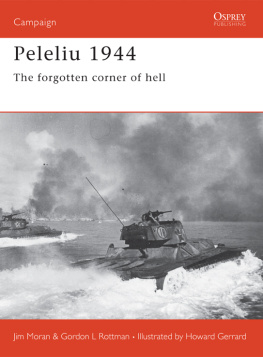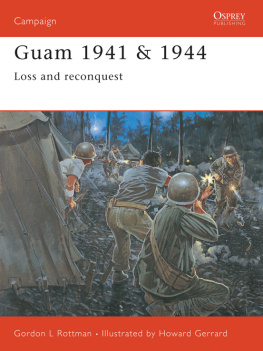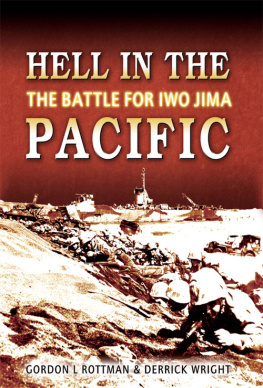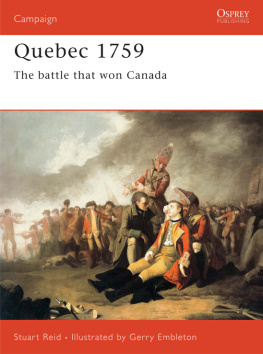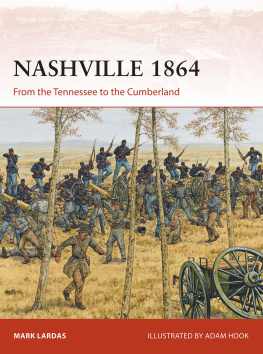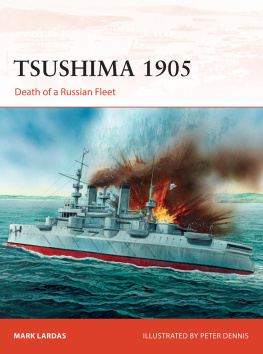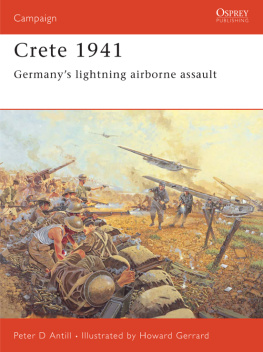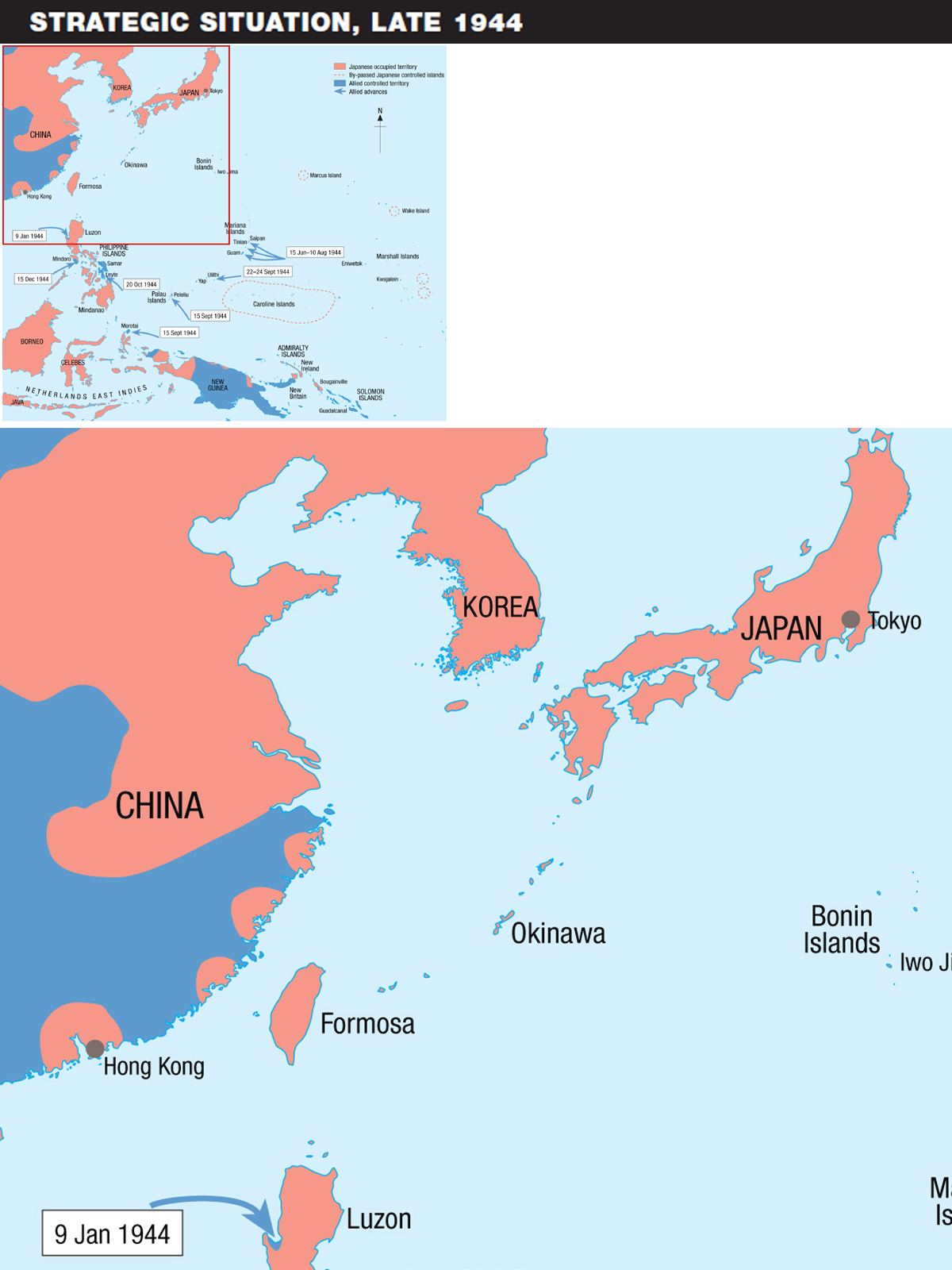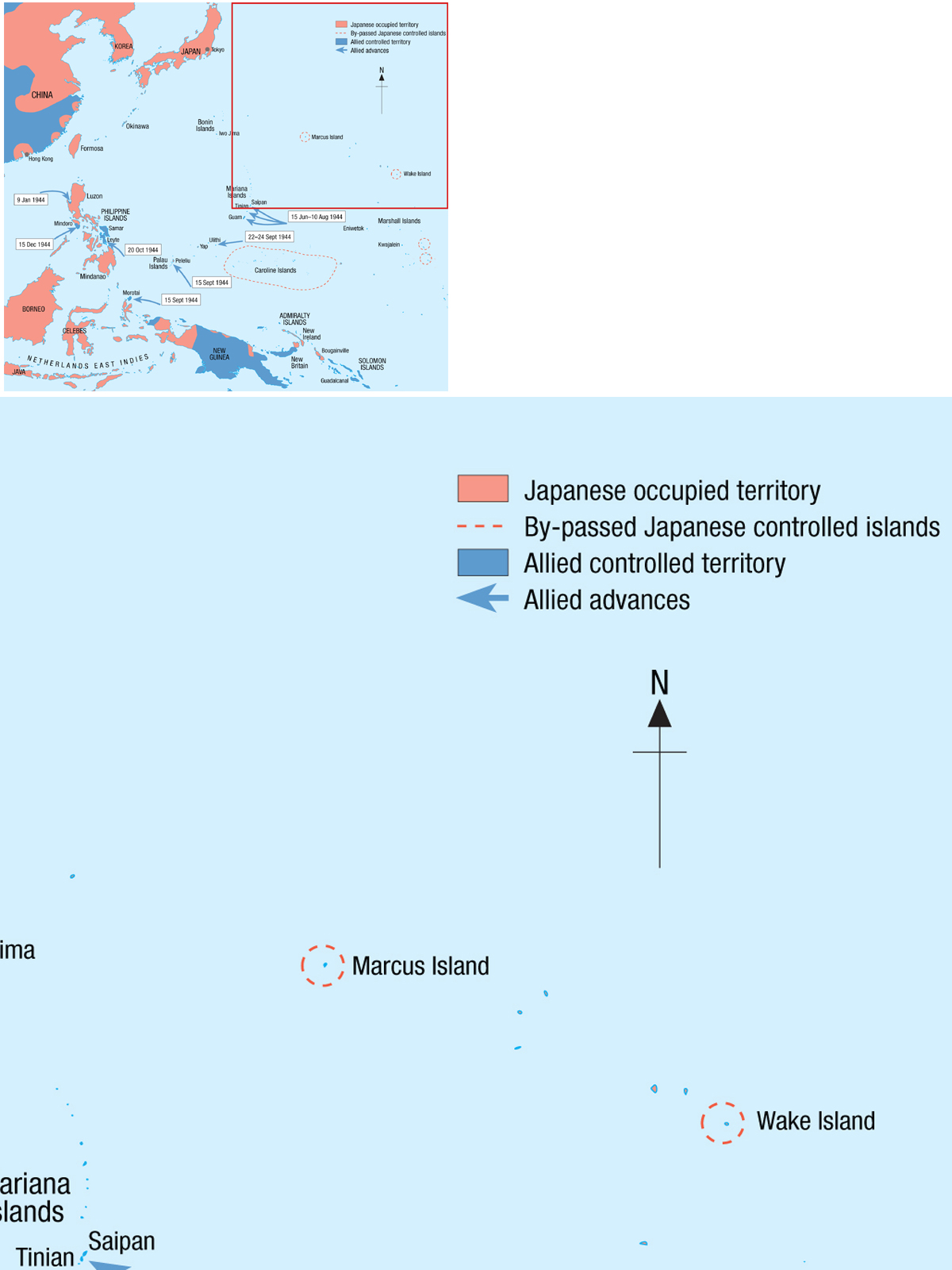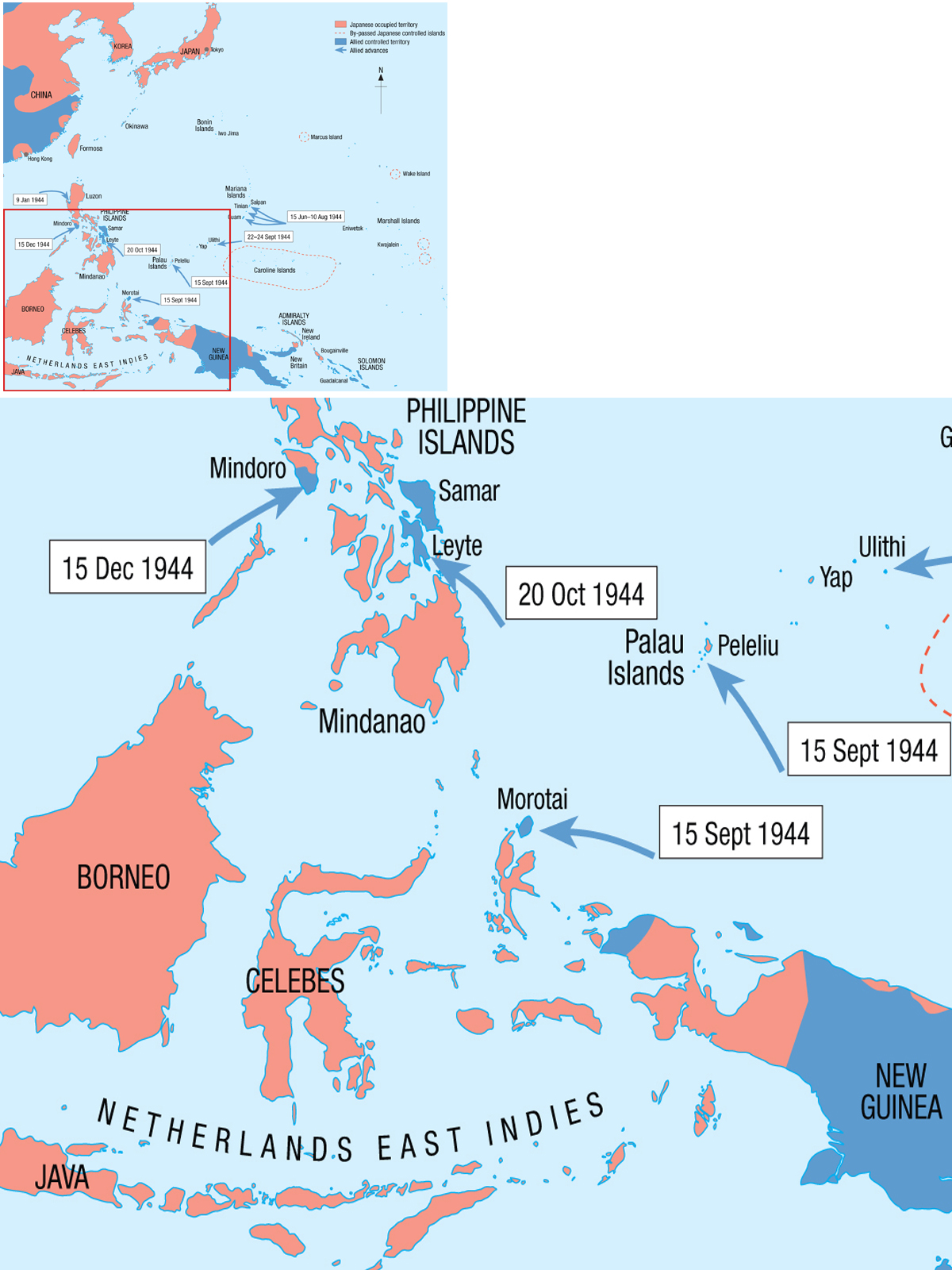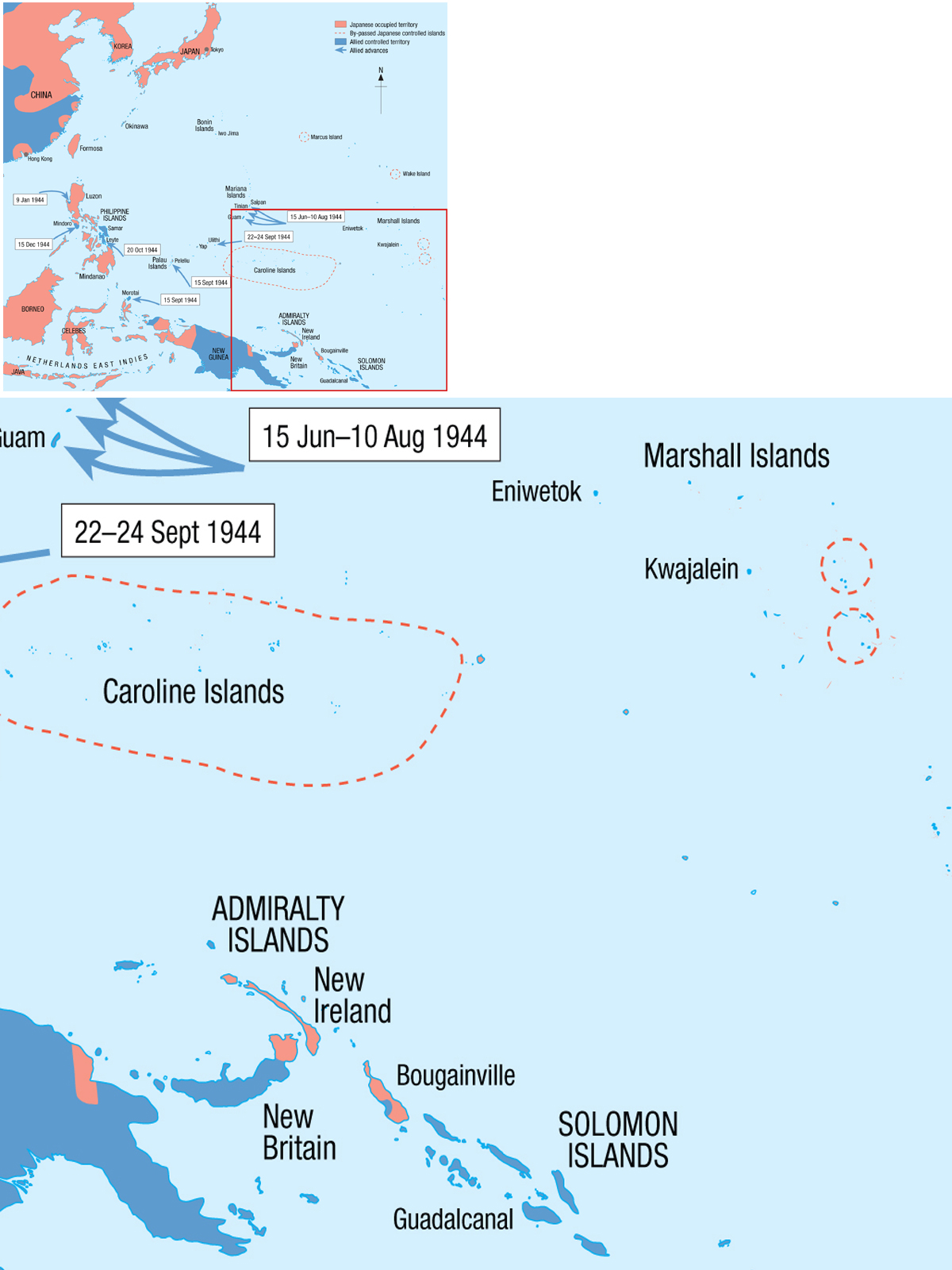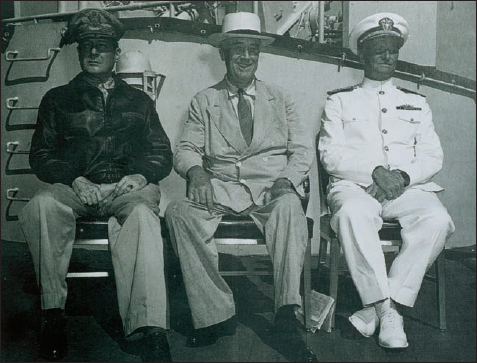Campaign 110
Peleliu 1944
The forgotten corner of hell
Jim Moran & Gordon L Rottman Illustrated by Howard Gerrard
Series editor Lee Johnson Consultant editor David G Chandler
CONTENTS
INTRODUCTION
ORIGINS OF THE CAMPAIGN
B y 1944 Japan was well and truly on the defensive. The glorious victories of 1941 and 1942 all across the Far East and the humiliation of the Allies were now just dim memories. In Burma, their offensive towards Imphal and Kohima had failed. By July, British and Commonwealth troops were pushing them back into central Burma.
President Roosevelt met with Admiral Nimitz and General MacArthur in July 1944 in Honolulu, Hawaii, to discuss Operation Stalemate, the planned assault on the Palau islands group, A target date of 8 September was set; this was subsequently revised to 15 September.
In the Northern Pacific, Admiral Chester W. Nimitzs forces had successfully island hopped from Tarawa in the Gilbert Islands in November of 1943, on to Kwajalein and Eniwetok in the Marshall Islands in early 1944 and to Guam, Saipan and Tinian in the Marianas, which were secured by August of 1944. Now Nimitz and his team had their sights set on Iwo Jima and Okinawa and the final objective, the Japanese Home Islands.
The delays in securing the Marianas would have two effects upon the Peleliu operations; firstly the delayed arrival of the III Amphibious Corps Commander, MajGen Roy S. Geiger, USMC, to take up his post, by which time planning for the Palau Islands operation was complete and he would have little time to change anything. Secondly, the inter-branch rivalry between the Army and the Marine Corps came to a head when LtGen Holland (Howlin Mad) Smith, USMC, relieved MajGen Ralph C. Smith, US Army, of his command of the Army 27th Infantry Division for defective performance. This act was to have serious repercussions all the way back to Washington, DC and the smoke from this serious bust-up was still much in evidence by the time of the Palaus operations. It must be said however that the two major players in the forthcoming operations, the 1st Marine Division (Mar. Div.) and the Armys 81st Infantry Division (Inf. Div.), would perform very well together with no repetition of what occurred on the Marianas.
In the Central Pacific, General Douglas MacArthurs forces had, since August 1942, worked their way from Guadalcanal up through the Solomons chain of New Georgia, Bougainville, New Britain, and across New Guinea. General MacArthur was now ready to fulfill his promise of I shall return, made to the Philippine people when he was ordered to leave by President Roosevelt in the dark early days of 1942.
The successful carrier-based air strikes on the Japanese naval bases at Truk in the Caroline Islands and at Rabaul in the Solomons had neutralized them sufficiently to allow them to wither on the vine. They were no longer a barrier to progress. MacArthur was determined to return to the Philippines as early as possible and in July of 1944 met with President Roosevelt and Admiral Nimitz in Honolulu. He argued that his failure to fulfill his pledge to return at the earliest possible moment would not only have an adverse psychological effect on the Philippines, but would also seriously diminish Americas prestige amongst her friends and allies in the Far East. MacArthur was so persuasive that he even won over Admiral Nimitz, to the extent of once again securing the loan of the 1st Mar. Div. as he had done for the re-taking of the Solomon Islands. Earlier in May 1944, Admiral Nimitz had already issued a warning order for the invasion of the Palau Islands group under the codename of Operation Stalemate. The target date was set for 8 September 1944.

Admiral Chester Nimitz, as Commander-in-Chief, Pacific Fleet and Commander-in-Chief, Pacific Ocean Areas (CINCPAC CINCPOA), was in overall command of Operation Stalemate II and it was his final decision that the invasion of Peleliu would go ahead.
Initial plans were for MacArthur to push north from New Guinea to Morotai and then on to the Philippines. With the Philippines back in US hands, the decision could then be made whether to assault the Japanese mainland via Formosa and China, favored by MacArthur, or from Okinawa and the Ryukus Islands as favored by Nimitz. On the same day as MacArthurs troops landed on Morotai Island in the Netherlands East Indies between the Philippines and New Guinea, the 1st Mar. Div., supported by the 81st Inf. Div., were to make landings in the southern Palaus on the islands of Peleliu and Angaur, as part of Operation Stalemate II, the revised plan for assaulting the Palau Islands. The original plan, Operation Stalemate, had to be revised due to the delays in the Marianas campaign the troops and shipping from which constituted a large portion of the resources for Stalemate. The revised target date for Operation Stalemate II was to be 15 September 1944.
Admiral William F. Bull Halsey, as Commander of Western Pacific Task Force, was in overall charge of the supporting operations and, whilst the invasion force was plowing towards the Palaus, he carried out air strikes with carrier-based planes on the southern and central Philippines, as well as air strikes against the Palaus, all part of the pre-invasion preparations.
One thing was becoming apparent as a result of these air strikes; although inflicting heavy damage to enemy shipping and aircraft, the raids on the Philippines were only lightly contested. This suggested to Halsey that they were not as heavily defended as everyone had at first thought. So convinced was he that he was right, Halsey ordered his chief of staff, Rear Admiral R.B. Carney, to send an urgent message to Admiral Nimitz on 13 September, just two days before the planned assaults on Morotai and the Palaus, recommending:
1. Plans for the seizure of Morotai and the Palaus be abandoned.
2. That the ground forces earmarked for these purposes be diverted to MacArthur for his use in the Philippines.
3. That the invasion of Leyte be undertaken at the earliest possible date.
Upon receiving the urgent communiqu, Admiral Nimitz reacted quickly to Halseys suggestions and in turn sent his own communiqu to the Joint Chiefs of Staff, who were then in Quebec for the Octagon Conference with President Roosevelt and Prime Minister Churchill. The Joint Chiefs consulted with General MacArthur and on 14 September, the day before D-Day on Peleliu, it was decided to speed up the landings on Leyte by two months confirming point 3 of Halseys recommendations to Nimitz. Points 1 and 2 of Halseys recommendations were, however, ignored. This would have little effect on the 31st Inf. Div. assaulting Morotai, which cost little in blood, but for the 1st Mar. Div. and the 81st Inf. Div. this decision would cost them over 9,500 casualties.
Next page
